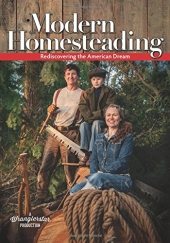




 1
1












 1
1




 Knowledge is constantly expanding. I really don't know that the forestry industry and their schools go very far into soil biology. Maybe they do and if so I apologize.
Knowledge is constantly expanding. I really don't know that the forestry industry and their schools go very far into soil biology. Maybe they do and if so I apologize.
 2
2




Bernard Welm wrote:Honestly as someone with a forestry degree (sure I studied in Northern Ontario), I would guess a large part of the die off is water related as he mentioned. Most conifers that I have dealt with are primary succession species, wanting to be the first plants growing in an area. A lot of that is due to the fact that they are evolved to deal with fire. The fire burns all the competition and then the seeds of the conifers will drop and start the next generation.
A couple considerations are if this has been pasture for a long time, the ground may not be as acidic as the Conifers are used to (pine needles make the ground acid). Even there the fire/ash neutralize that acidity. Something that he could try next time is to burn a portion of the pasture (where there are no remaining trees) and see if that changes the conditions. It will warm the soil a bit more and release more nutrients which could help the trees get going quicker.
That said I can't remember how Douglas Fir grows/reproduces. But I can't say that I would have done anything different. Make sure the roots are in strait, dirt pressed in good and tight. After that it is up to God and the amount of rain that will determine if the trees survive.
Successional stages can be roughly categorized as “early”, “mid”, and “late” succession. In the early stages of succession, disturbed areas are quickly colonized by “pioneer” plant species. These pioneer plant species thrive in disturbed areas, are fast-growing species, typically prefer an open and sunny environment, or like a bare, exposed soil in which to germinate. For example in Oregon, fireweed (scientific name = Epilobium angustifolium), wood groundsel (Senecio sylvaticus), and red alder (Alnus rubra) are typical early-successional species that establish quickly in openings in Pacific Northwest forests, and set the stage for the arrival of other pioneer shrubs and trees such as salmonberry (Rubus spectabilis), Pacific rhododendron (Rhododendron macrophyllum), snowbrush (Ceanothus velutinus), and Douglas fir (Pseudotsuga menziesii). Gradually, shrub and tree pioneers change the environment by reducing the amount of sunlight reaching the forest floor, reducing the amount of soil moisture during critical times of the year, and altering the nutrient cycling regime.
By the mid successional stages, the forest is dominated mostly by well-developed full-canopied trees, numerous shrub species, and a somewhat diverse developing plant understory. The conditions created by the pioneer species encourage and favor the growth of Douglas-fir. This tree species, which along with Red Alder germinates readily in mineral soil following fire, can survive for many centuries and is present in the early to late-successional stages, but dominates in the mid-successional stages.
Late-successional stages are characterized by the dominance of multi-aged and sized tree species, a well developed shrub and small tree layer, and a well developed understory with shade-tolerant species. Potentially, Douglas-fir forests can be replaced by the more shade-tolerant Western Hemlock (Tsuga heterophylla), which is the climax species in lower elevations of the Western Cascades. “Climax” communities represent the end of the line, so to speak, in the succession of a particular forest type. Cyclical patterns of disturbance maintain the dynamic process of succession. Climax forests are characterized by species which can reproduce in the shade of their own kind, and so are dominated by species that are well adapted to shade. These species can occupy the forest indefinitely until the next major disturbance.
First year seedlings, especially those on dry sites, actually survive and grow best in light shade, although older seedlings require full sun. Lack of summer moisture triggers young seedlings to go dormant until the following spring.
Full shade and moisture competition caused by competing vegetation such as understory hardwoods, woody shrubs, and grasses can kill Douglas-fir seedlings. Many of these plants grow much more quickly on disturbed sites than young Douglas-fir trees. This results in difficulties regenerating the species without weed control. Fire also will favor Douglas-fir by destroying other species that would compete with and outgrow young seedlings.




Wranglerstar Youtube Channel: https://www.youtube.com/user/wranglerstar
Author of Modern Homesteading : http://permies.com/t/52228/
 2
2








Wranglerstar Youtube Channel: https://www.youtube.com/user/wranglerstar
Author of Modern Homesteading : http://permies.com/t/52228/








Wranglerstar Youtube Channel: https://www.youtube.com/user/wranglerstar
Author of Modern Homesteading : http://permies.com/t/52228/








Wranglerstar Youtube Channel: https://www.youtube.com/user/wranglerstar
Author of Modern Homesteading : http://permies.com/t/52228/
 1
1








Wranglerstar Youtube Channel: https://www.youtube.com/user/wranglerstar
Author of Modern Homesteading : http://permies.com/t/52228/





| I agree. Here's the link: http://stoves2.com |





